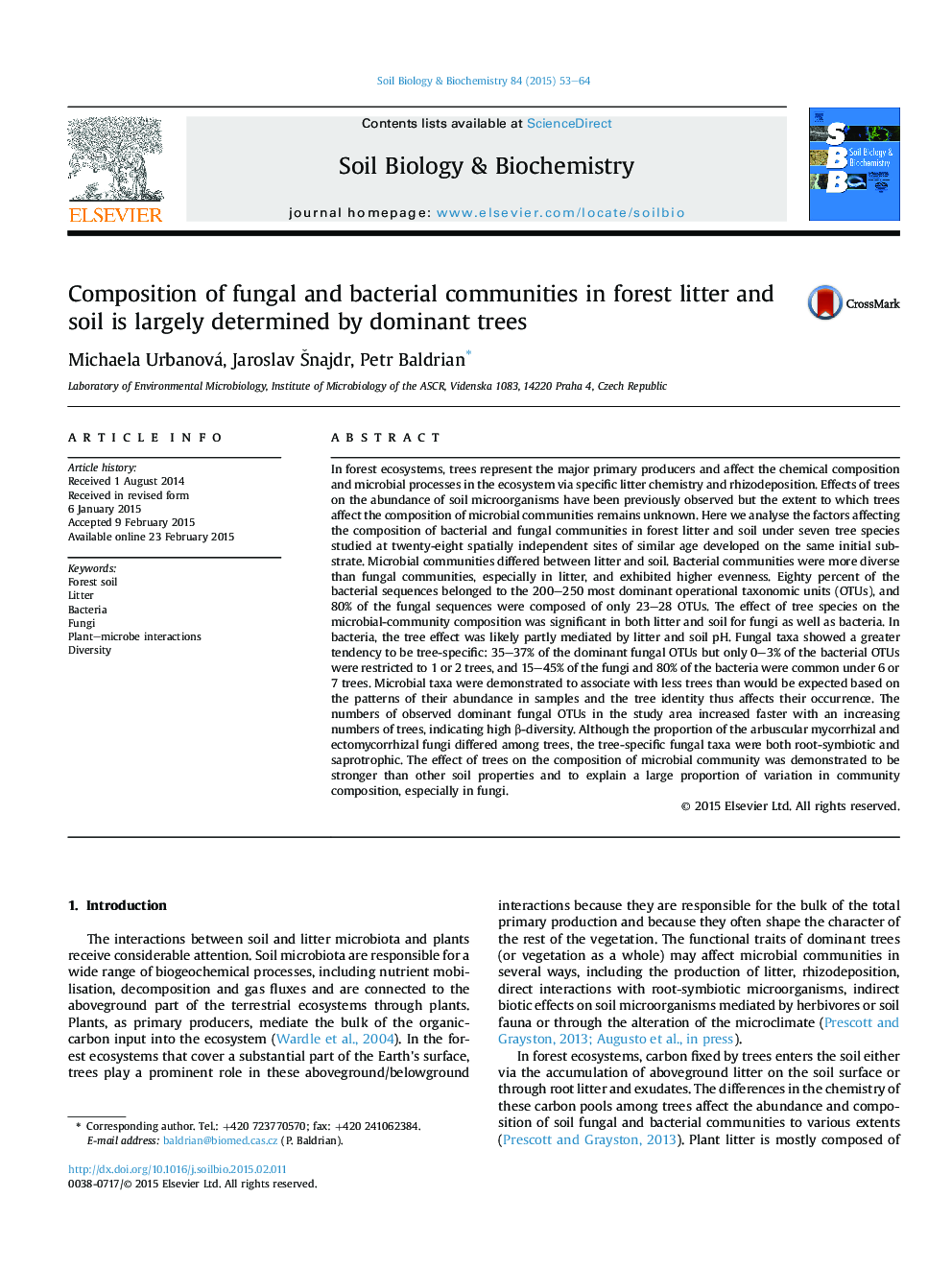| کد مقاله | کد نشریه | سال انتشار | مقاله انگلیسی | نسخه تمام متن |
|---|---|---|---|---|
| 2024544 | 1542600 | 2015 | 12 صفحه PDF | دانلود رایگان |
عنوان انگلیسی مقاله ISI
Composition of fungal and bacterial communities in forest litter and soil is largely determined by dominant trees
ترجمه فارسی عنوان
ترکیب جوامع قارچی و باکتری در بستر و خاک جنگل به طور عمده توسط درختان غالب تعیین می شود
دانلود مقاله + سفارش ترجمه
دانلود مقاله ISI انگلیسی
رایگان برای ایرانیان
کلمات کلیدی
موضوعات مرتبط
علوم زیستی و بیوفناوری
علوم کشاورزی و بیولوژیک
دانش خاک شناسی
چکیده انگلیسی
In forest ecosystems, trees represent the major primary producers and affect the chemical composition and microbial processes in the ecosystem via specific litter chemistry and rhizodeposition. Effects of trees on the abundance of soil microorganisms have been previously observed but the extent to which trees affect the composition of microbial communities remains unknown. Here we analyse the factors affecting the composition of bacterial and fungal communities in forest litter and soil under seven tree species studied at twenty-eight spatially independent sites of similar age developed on the same initial substrate. Microbial communities differed between litter and soil. Bacterial communities were more diverse than fungal communities, especially in litter, and exhibited higher evenness. Eighty percent of the bacterial sequences belonged to the 200-250 most dominant operational taxonomic units (OTUs), and 80% of the fungal sequences were composed of only 23-28 OTUs. The effect of tree species on the microbial-community composition was significant in both litter and soil for fungi as well as bacteria. In bacteria, the tree effect was likely partly mediated by litter and soil pH. Fungal taxa showed a greater tendency to be tree-specific: 35-37% of the dominant fungal OTUs but only 0-3% of the bacterial OTUs were restricted to 1 or 2 trees, and 15-45% of the fungi and 80% of the bacteria were common under 6 or 7 trees. Microbial taxa were demonstrated to associate with less trees than would be expected based on the patterns of their abundance in samples and the tree identity thus affects their occurrence. The numbers of observed dominant fungal OTUs in the study area increased faster with an increasing numbers of trees, indicating high β-diversity. Although the proportion of the arbuscular mycorrhizal and ectomycorrhizal fungi differed among trees, the tree-specific fungal taxa were both root-symbiotic and saprotrophic. The effect of trees on the composition of microbial community was demonstrated to be stronger than other soil properties and to explain a large proportion of variation in community composition, especially in fungi.
ناشر
Database: Elsevier - ScienceDirect (ساینس دایرکت)
Journal: Soil Biology and Biochemistry - Volume 84, May 2015, Pages 53-64
Journal: Soil Biology and Biochemistry - Volume 84, May 2015, Pages 53-64
نویسندگان
Michaela Urbanová, Jaroslav Å najdr, Petr Baldrian,
